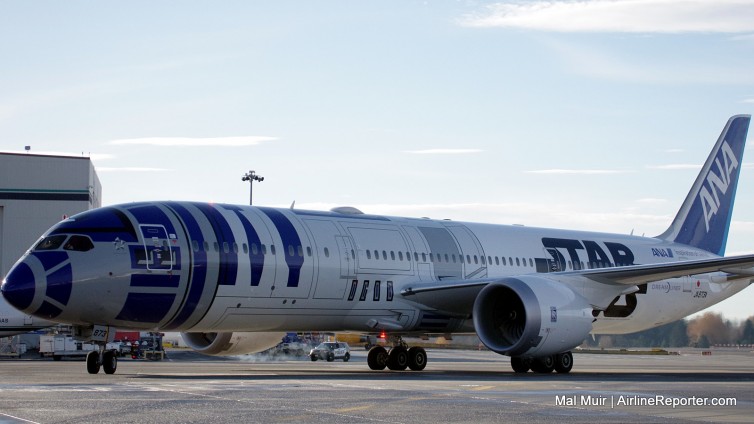
ANA’s Star Wars R2-D2 arrives to gate S16 at SeaTac. This was the first time the aircraft had been deployed to Seattle.
My initial assignment, with AirlineReporter long ago, was to cover the arrival of the first ANA 787 to Seattle. It is befitting that my long history with AirlineReporter officially ends with another ANA 787; this time though it is the ultimate 787 – the R2-D2 Star Wars jet.
The special 787-9 rolled out in October and began service later that month to Vancouver. Now that it is operating out in the wild, I eagerly awaited my opportunity to spot it in my current hometown of Seattle. Being a Star Wars and Astromech droid fan myself (R5s are better than R2s in my opinion), how could I not take this on?
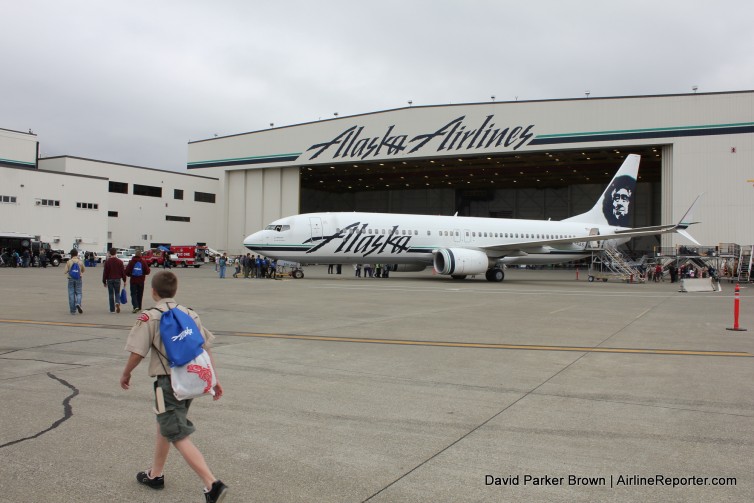
A Boy Scout walks by an Alaska 737 at Aviation Day
Passion, dedication, and giving back to the community. These are the main things that really made Alaska Airlines Aviation Day shine. Since I have been running AirlineReporter, for almost eight years, I have met many people in the airline business and aviation. Almost all have a strong passion, but no matter where I travel and who I meet, it is hard to find people that are more dedicated than those who live and work in the Pacific Northwest.
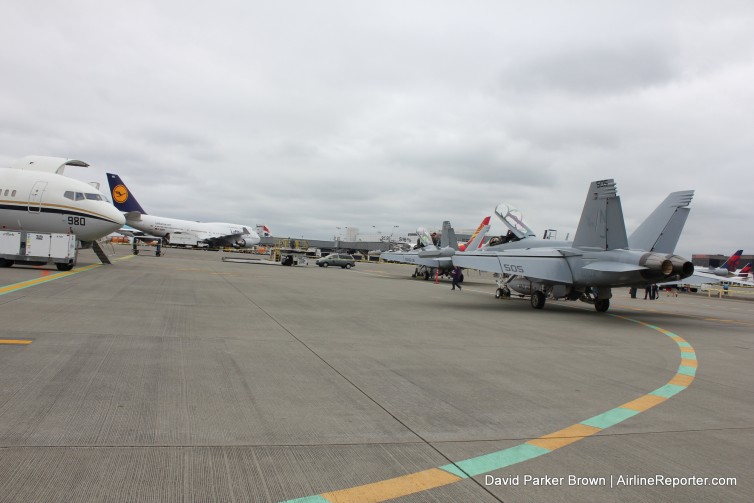
Multiple planes on display at Alaska’s Aviation Day 2015
We have deep roots in aviation here, and I think one prime example of this is Alaska Airlines’ Aviation Day. This yearly event, which is only open to formal youth groups, allows guests to experience and learn about aviation and potential careers in the field. I was invited to this year’s event, and although there were plenty of amazing things to see and do, I was more in awe of all the wonderful people who work hard to make this event happen.
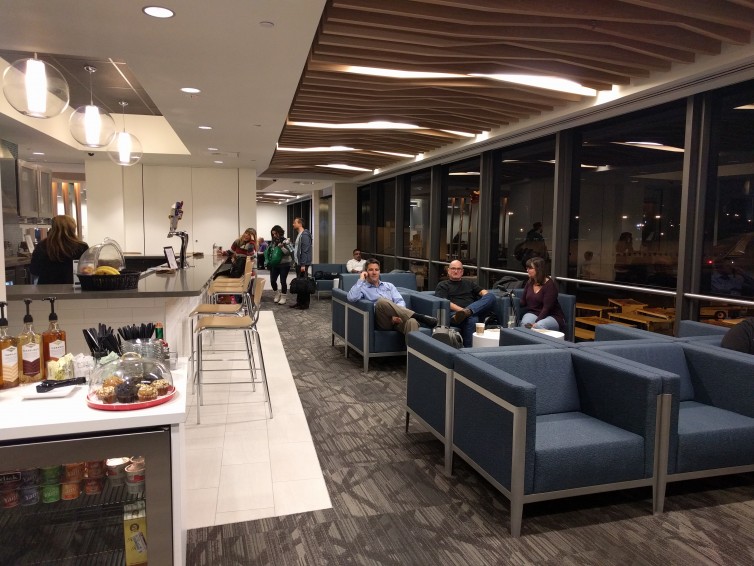
One of the seating areas for the new Alaska Airlines Board Room at SEA’s N Satellite – Photo: Neil Enns | Dane Creek Photography
As of November 10, customers visiting Seattle-Tacoma International Airport’s North Satellite terminal will have an enhanced passenger experience. After several months of delays and postponements, the new and highly-anticipated Alaska Airlines Board Room opened for business between Gates N1 and N2.
The N Board Room supplements the main location in the D Concourse of the main terminal, allowing passengers to have lounge access closer to Alaska’s departure gates in the remote terminal. This lounge is meant as a stopgap until a permanent lounge opens in 2018 as part of an overhaul and expansion of the North Satellite building.
When the project was first announced in December of 2014, the original target opening date was mid-2015, but postponements kept rolling in and pushing the date further out. Coupled with little information about lounge design and amenities, the anticipation grew, especially within the frequent flyer community on Flyertalk.
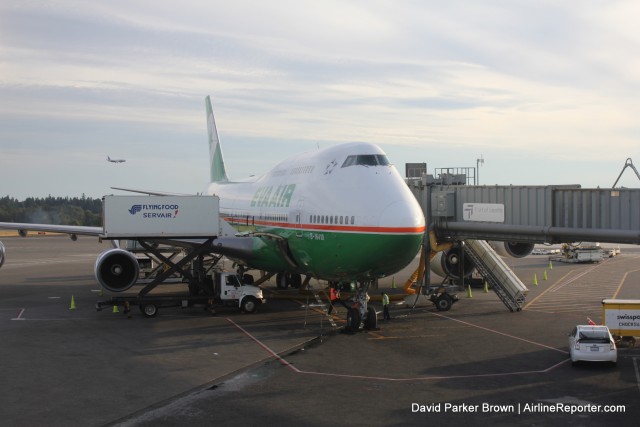
My EVA Air 747-400 in Seattle, after I landed
Typically, flying on the upper deck of a Boeing 747 is an exclusive affair. When the jumbo jet was first introduced, the upper section was a lounge for premium passengers. More recently, most airlines put premium seats up top. This means that most don’t have the ability to experience the upper deck. Unless you have the means, a job willing to pay, the miles to upgrade, or some extra luck, you’re relegated to the main deck.
However, there have been a few airlines that have configured their 747s with economy on the upper deck. Today, Air France, Virgin Atlantic, and EVA Air are the only ones to offer the option. With many airlines constantly upgrading their fleet, and the 747-400 thus being phased out, the ability to fly economy up top on the “Queen of the Skies” will soon be a thing of the past.
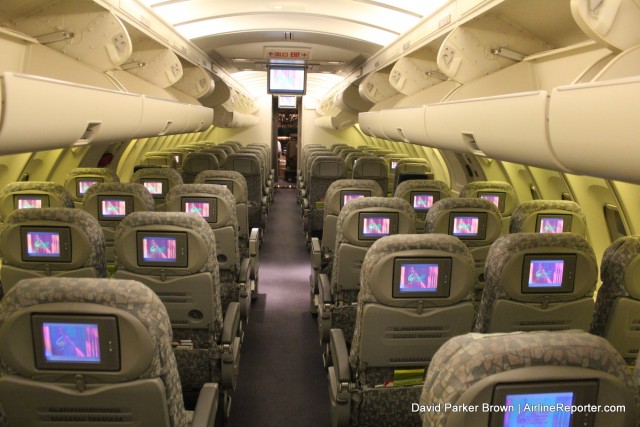
The upper deck of my Boeing 747-400
I recently had a flight home from Taipei (TPE) to Seattle (SEA) on EVA Air, and the airline kindly put me in business class (pretty much standard procedure when flying on press-related trips). At first, it didn’t fully make sense to them when I asked if I could give up my business class seat in the nose of the 747 for an economy seat on the upper deck. But that is exactly what I worked hard for; I was never as excited to fly in economy.
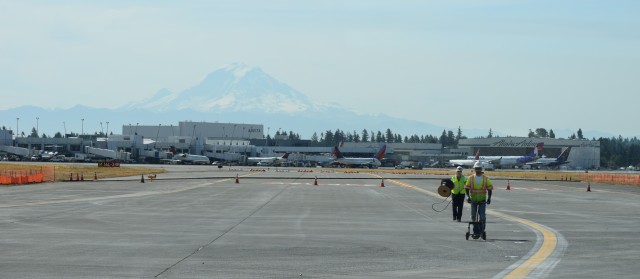
Taxiway Mike at Sea-Tac Airport is closed during reconstruction of runway 16C/34C – Photo: Lauren Darnielle | AirlineReporter
Last week, I had the opportunity to get a behind-the-scenes look at the construction currently in progress on Runway 16C/34C at Seattle-Tacoma International Airport (SEA, aka Sea-Tac). The center runway closed on May 4th for a complete reconstruction and is scheduled to re-open October 30th, so the project is already well underway.
At 9,426 feet in length, 16C/34C is Sea-Tac’s second-longest runway, consisting of over 4,000 concrete panels, each measuring 20 feet x 18.75 feet. Needless to say, reconstructing a runway is a huge undertaking, so there was plenty to see on our tour!
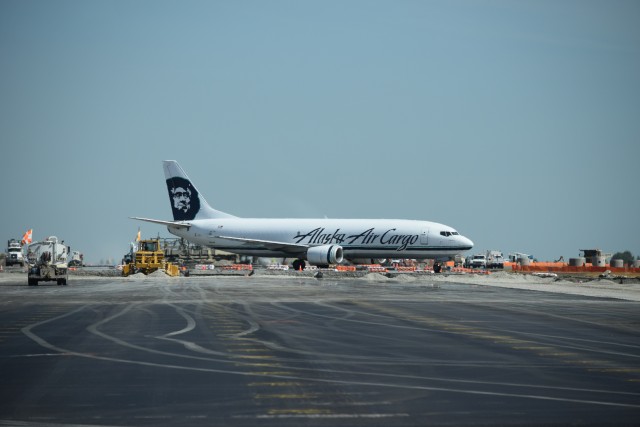
During construction, it is business as usual on the other two runways and the open taxiways – Photo: Lauren Darnielle | AirlineReporter
Originally built in 1969, 16C/34C is the oldest runway at Sea-Tac. It was designed to last 20 years, so it has more than done its duty. Upon completion of this reconstruction project, all three of Sea-Tac’s runways will have been constructed or rebuilt within the last seven years. 16R/34L (the hotly-contested ’œthird runway’) was built in 2008, and the longest runway, 16L/34R, was reconstructed in 2009.
’œWe continue to grow at a tremendous rate and the reconstruction of Sec-Tac’s center runway is vital to serve the demands of our region with progressive steps to improve safety, efficiency and environmental stewardship’, said Mike Ehl, Director, Aviation Operations. ’œThis will bring all of our runways up to modern standards for reliable use for decades to come.’







